Small and medium businesses took a severe beating from the COVID-19 pandemic in 2020. According to McKinsey, 77 percent of US consumers tried new shopping behaviors, including new channels, stores, and brands.
Not having a loyalty app in such a crisis is nothing less than a disaster. That’s why today, building a customer retention solution has become an essential part of a digital strategy for many businesses.
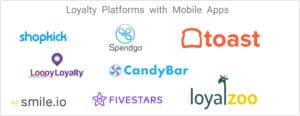
This blog is for you if you want to create a rewards program app optimized for your business. We’ll answer “How to make a loyalty card app?” and other questions business owners face when they need to retain customers.
Table of Contents:
- 7 Reasons Why You Should Create Your Own Loyalty App
- Top Industries That Need a Loyalty Program App
- The Best Loyalty Program Apps
- Must-Have Features of Reward Program App
- 3 Steps to Make a Loyalty Card App
- Best Practices in Developing Loyalty Apps
- Loyalty and Rewards App Development Cost
- Our Experience in Loyalty App Development
7 Reasons Why You Should Create Your Own Loyalty App
Businesses don’t build loyalty apps for the sake of vanity. The driving impulse here is understanding that it’s way less expensive to retain a customer than acquire new customers.
And if an app is all you need to replace the plastic, then maybe it’s time to become a place millennials hype about.
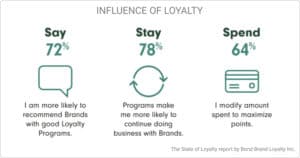
Here are some other goals you might be pursuing by getting a loyalty app built for your company.
Reason #1: Gather customer data and personalize their experience
If a restaurant knows my favorites and offers me discounts on my birthday or a free treat now and then, I’m already sold. The same approach works for any other business looking to create a deeper bond with its customers.
The point is to create exciting personalized experiences based on customer data and make your buyers feel special. In return, they will start making more purchases or decide to subscribe to your products and services.
Related: How To Create A Mobile Ordering App Like Chick-Fil-A
Reason #2: Catch up with big guys
Though it’s hardly the reason to start fussing about a loyalty app, companies like Starbucks and Nike do set the bar for customer satisfaction with their loyalty programs.
Reason #3: Increase the average check size
Every time you show customers how close they’re to a reward, you’re basically asking them to order more. And let’s admit, sometimes it’s just hard to resist the urge to get that perk.
Moreover, every purchase strengthens your customer relationships.

Reason #4: Engage customers with notifications
Notifications, when used wisely, allow you to keep in touch with your buyers even when they’re far away from the place. Just remember, today, you don’t get a second chance if your messages do not carry tangible value.
Reason #5: Allow to order remotely and pick up
Who loves to place a pick-up order on their way home and then wait in line? That’s right, nobody. A loyalty app is perfect in this case: order remotely, pay via the app, pick up at the place, earn points – voila!
Reason #6: Gather customer feedback
It’s funny how much people will share about your service from the comfort of their home. Many of us prefer to avoid negative interactions, which means you’re more likely to gather genuine customer reactions when you do so via an application.

Reason #7: Sound post-COVID strategy
In times when people may still be wary of visiting crowded places, a loyalty application becomes a life-saver. Customers can continue to order through the solution and even get their orders delivered.
Top Industries That Need a Loyalty Program App
When you think of loyalty points, the first thing that comes to mind is probably some restaurant or a coffee shop, right? However, many other businesses can also benefit from a loyalty program app.
Apart from dining businesses, the following verticals can absolutely leverage the advantages of rewards-based solutions:
- Automotive
- Travel
- Retail
- Entertainment
- Pharma
- Banking
If you work in one of these industries, it’s high time to consider a loyalty app. This is quickly turning from a differentiating factor into a survival one.
The Best Loyalty Program Apps
Speaking of the top-performing rewards apps, let’s quickly review these well-known solutions that have managed to turn their customers into fans.
Starbucks
Starbucks was a genuine trailblazer in its industry when it came out with its loyalty app in 2009. Their solution is still perceived as the best performing app among restaurant chains.
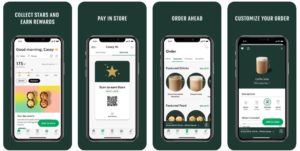
Key features:
- easy to order and pay online
- share rewards with friends
- quickly find the nearest store
Nike
Nike joined the mobile apps revolution right when the first iPhone came out. The company features 9 mobile solutions in the App Store. Naturally, their flagship Nike app includes a membership rewards program.
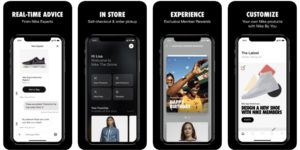
Key features:
- early access to new products
- invites to member-only events
- birthday rewards
FiveStars
FiveStars is an example of an aggregator that enables rewards programs for small businesses and lists their services in its mobile application. As a result, the user experience becomes more general, even despite some customization offered by FiveStars.
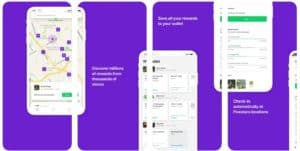
Key features:
- customers can sign up onsite via a tablet app
- automated marketing campaigns
- rewards can be redeemed outside the application
Must-Have Features of a Reward Program App
To build a rewards app that truly engages your customers, you need to spice it with the right set of features. Here are the options we consider must-haves for rewards applications keeping buyers coming back again and again.
Easy to enroll customers
If you look at such loyalty platforms as Toast, you’ll discover the following sign-up options:
- in-person when going through the payment workflow
- after placing an order through Toast
- via a sign-up link or a digital receipt
- staff can sign up customers directly
It makes sense to add platform-specific sign-up options, e.g., Apple ID in an iPhone app or Google ID in an Android application. With these options, your customer can join the app in no time at all.
Easy to redeem & look up earned points
Reward points can be redeemed before or after payment. Customers should be able to add their credit cards and review their total rewards balance at any time. In addition, customers must receive updates on earned points via push notifications.
Members can use their gift cards for the loyalty program
Ideally, if you decide to keep plastic cards (catering to app-agnostic clients), they should work with cash balances and loyalty points. That way, any gift card can also work as a loyalty card and vice versa.
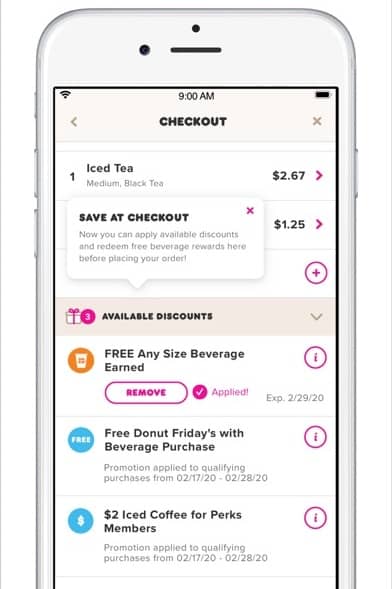 Of course, customers opting for the mobile solution will prefer to pay with a credit card right inside the application.
Of course, customers opting for the mobile solution will prefer to pay with a credit card right inside the application.
Extra features elevating customers’ user experience
You can significantly improve how customers interact with your company by adding a few seemingly trivial features:
- geolocation for finding the nearest locations
- leaving tips
- sharing gifts with friends
- customizing an order when pre-ordering
Rewards programs thrive when built by a custom mobile app design and development team that understands user engagement.
Reports to glean insight about customers
Your loyalty platform should also provide granular reports on your customers’ spending so that you can set up an almost-per-customer marketing strategy, drawing on the insights from each customer visit.
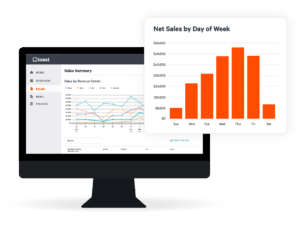
This data clearly shows who your most loyal customers are and what steps you can take to improve the experience for other guests.
Easy to operate for your staff
Remember that a loyalty app is only one side of the solution. What also matters is how easy it’s for your staff to work with rewards. They should be able to quickly find a customer in the system using any available info: a name, credit card, phone number, etc.
It also helps if you can add existing customers to the platform in batches on the admin side.
Integrations with other loyalty programs
Some of the best rewards-based platforms also provide integration with other loyalty services. For example, Toast allows customers to redeem rewards from other restaurant loyalty applications like Punchh or Paytronix. It’s worth noting that such integration takes some tweaking in the back end. So a partnership with someone who has experience in building loyalty apps will come in handy.
3 Steps to Make a Loyalty Card App
A loyalty app is so much more than a mobile app. This statement holds true for any modern mobile app. I’m pretty sure you already know from the features we described that I’m talking about a loyalty app’s back end — a standalone web application for owners to manage the mobile solution.
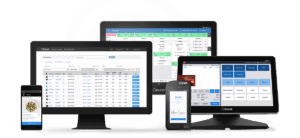
Therefore, when discussing how to build a customer loyalty app, I’ll keep in mind both a mobile application and its back end.
Step #1: Create and test an interactive prototype
This step is crucial for the customer-facing mobile application and can be ignored entirely for the admin portal. The reason is you don’t need to create the same engaging experience for your employees as you do for customers.
When creating a prototype, you begin by lining up all possible user flows — it’s basically a description of the actions users can perform in the app and the steps they go through.
After mapping the user experience via user flows, you can start drafting wireframes — rudimentary screen visualizations. From these low-fidelity designs, you proceed to high-fidelity mockups representing the application’s screens as they will look in real life: the rewards app design.
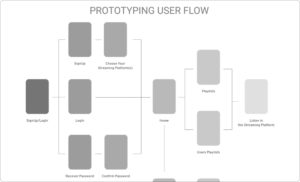
Using software like InVision, you can put these screen mockups together into a single interactive prototype. It’s kind of an app’s shell with dumb data that responds to pressing icons, buttons, etc.
That’s precisely what you need to get the first validation of your business idea with real users. We recommend services like usertesting.com, where you can pick your target audience and gather valuable feedback, which will help you iterate the app’s design without spending a dime on coding.
Step #2: Develop an MVP
Once you’ve brought the interactive prototype into shape, you can start to develop a loyalty app. It’s time to bring in programmers and architects who will translate the designed screens into code.
Now, besides the mobile application, the engineering team will code the back-end (database, server-side logic, etc.) and a web application for your employees to manage the app and its content.
The admin web application is where you will see reports, create campaigns, define how bonuses are accumulated, and do other things relevant to your loyalty program.
Here are a few things to keep in mind as you create a loyalty program app.
Agile development process
First of all, choose a development team that actively practices Agile. That doesn’t mean they will be nagging you with questions every day, though. Quite the contrary — you’ll get updates every two weeks or so.
What really matters is with Agile, any issues or bugs get caught very early on in the development process and typically don’t make it into the public version of a product.
Also read our article about Agile Mobile Application Development.
Location-based features
For a mobile loyalty solution, geolocation is pretty much essential. You can not only show the route to your nearest place of business but also use geofencing to send push notifications to your customers about limited-time offers when they are nearby.
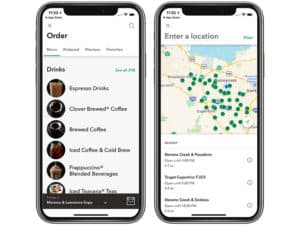
To take it a step further, you can enable in-store navigation using Bluetooth Low Energy beacons. This technology is also helpful for enabling near-proximity notifications inside malls where GPS does not usually work.
Related: How to develop a location-based app
Payments
One reason to create a loyalty app is to increase the average order, which already implies mobile payments. Your product should absolutely have an option for the customer to add a credit card, and ideally, sign up for a paid subscription that unlocks some long-term value.
iOS clips
Apple has recently released iOS Clips — a nifty iOS feature that can be added to any application. The idea is your customer scans a QR code or taps an NFC tag somewhere close to your business and gets instant access to your mobile product miniaturized down to one helpful feature — something they can do without downloading an application.
Headless CMS
To speed up the development process, we can help you pick an open-source off-the-shelf CMS that comes with a ready-made UI for the admin portal. As you probably know, designing a web application in addition to the loyalty program app design can take a lot of time and resources.
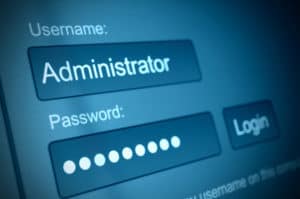
Therefore, having an option to cut down these expenses can help you reallocate your budget to more essential features and significantly expedite the time to market.
Step #3: Launch the app and track user engagement
Mobile apps go to the App Store and Google Play, and the back end, together with the web admin application, gets transferred to a production environment. The difference between a production and testing environment is that the former can instantly handle many more users working with the app.
You’re lucky if your developers already have experience deploying mobile apps into mobile stores because Apple and Google have peculiar processes. Sometimes, these procedures can delay the release of an app and require some updates.
If you’ve done everything right during the development step, your app already has an analytics service tracking user actions in the app, e.g., Google Analytics or Flurry.
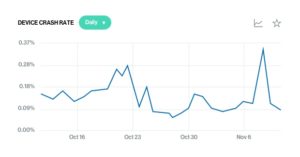
Using reports from these tools, you can identify the most common issues users may have with your app and decide on the next features to make the product even more engaging.
However, you do need to spend some time setting up the analytics service. For example, you need to identify goals that users may reach within the app. That’s often how you may uncover inefficient user flows.
Best Practices in Developing Loyalty Apps
A loyalty app done right will help you set up an ever-growing revenue stream.
“Our loyalty app has tens of thousands of downloads and processes 25% of all transactions. The goal is for 100% of repeat traffic to come through the app because it allows us to narrowly target our customer base and drive offers that are tailored to each specific person.“
Austin Brinson, vice president of analytics at B.GOOD
Entertain and engage
Making your loyalty app fun to use can take your customers’ experience to an entirely new level, and there’s plenty of technologies to rely on.
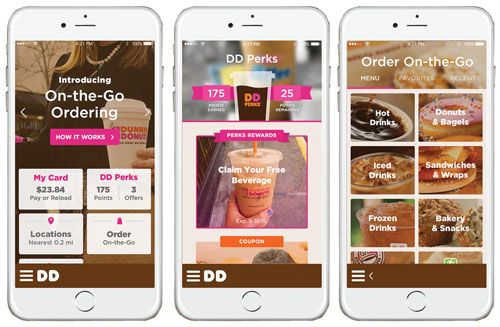
- Use push, location-based, and proximity notifications for special events
- Offer your customers mini-games like quizzes to shorten their wait time
- Include video recipes/guides, virtual reality, or augmented reality experiences to leave a mark on your customers’ experience
- Tease your regulars with how close they’re to the next tier in your rewards system
Offer personal experience
The insights that you’ll get from the loyalty app will help you make your customer experience as personal as possible:
- ask if they’d like the best table on their birthday in advance
- allow delayed orders to get rid of lines
- integrate mobile payments for self-checkout
Gather customer feedback
Remember that your loyalty app can also collect customer feedback explicitly:
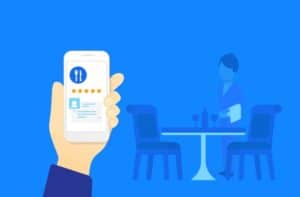
- build in surveys
- ask customers to leave a review on the app stores
- analyze their feedback and modify their experience
Think long-term
It’s one thing to develop a custom loyalty app just for your business, and it’s an entirely different thing to create a loyalty app that can be offered as a white label solution by other companies.
Loyalty and Rewards App Development Cost
It makes sense to set reasonable expectations about what kind of loyalty app your business will most benefit from. If you’re looking for a 100% custom solution that allows customers to tap smartphones to apply or exchange bonuses, navigates guests to a table, fires off a notification when they stroll by your place, or offers a virtual reality experience — you’re looking to spend somewhere between $200K and $300K.

The things you are scratching the back of your head to justify this app development cost include back-end infrastructure, API integrations, admin portals with reports, and support for the latest tech like augmented and virtual reality, NFC, and BLE beacons.
The usual custom loyalty app with a more timid functionality can be realized within a $150K budget; some off-the-shelf solutions will cost even less (though limiting your options considerably).
Our Experience in Loyalty App Development
One of the loyalty solutions we’ve worked on is an app-based rewards program for a business called AppyPerks. It’s a free mobile app (built natively for iOS and Android) that allows customers to spin a prize wheel and win a perk with a participating business.
As part of the project, we’ve also built a React-based web solution for the customer to add and manage new businesses. It works in tandem with the app via an API.
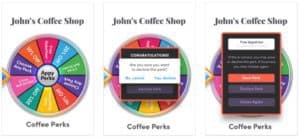
Here’s how our partner described his experience:
“Topflight Apps went above and beyond to deliver a fantastic product. I wouldn’t even call it an MVP because I didn’t want to bring something to businesses that was only half working. They kept me on track, letting me know when features weren’t needed and when I needed to expand my original vision.”
Dave Avne, Founder at AppyPerks
You can learn more about the AppyPerk project in a Clutch review.
Time to create a rewards app
If you decide to build a loyalty app for your business, remember that it’s essential to partner with a development team that will be able to make a rewards app from scratch or tweak a ready-made solution according to your needs.
Schedule a call to discuss building a loyalty app with one of our experts.
Frequently Asked Questions
Will I need to pay any fees to Apple and Google for selling via my mobile loyalty program?
No, if you sell physical goods.
How can I check if my loyalty app is truly engaging?
Only by prototyping and user testing. You can also release an early version to test it with a small sample group from your target audience.
Can I build a cross-platform loyalty app using tools like React Native?
Yes, if you don’t plan on introducing advanced features, e.g., augmented reality or anything that has to do with phone sensors.
How to create a loyalty card app using a white-label solution?
Based on your industry, pick a platform that offers a compelling mobile experience, for example, Toast if you’re in the restaurant business, and find developers who have already worked with this platform.


